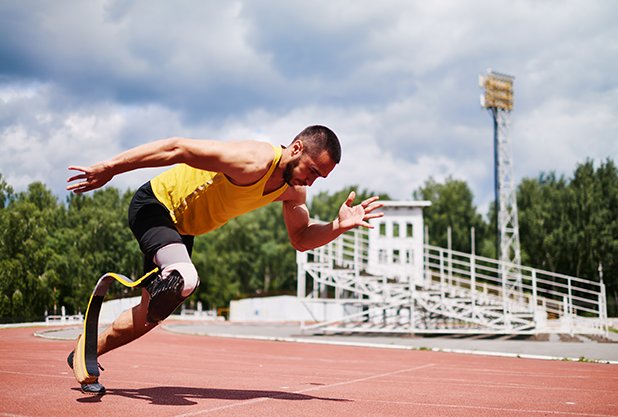
Competitions help stimulate the creation of better facilities for those who deal with disabilities
Daniel Dias was born with congenital malformation of the arms and right leg. He discovered the sport for 16 years and today is the largest Brazilian medalist with 10 golds, four silvers and one bronze won in Paralimpíadas Beijing (2008) and London (2012), and 14 titles and six world records. Terezinha Guilhermina has a congenital disability that she lost vision. She used the sport as a form of rehabilitation and is now considered the fastest sprinter in the world blind, having broken the world record in the 100 meter sprint and won the gold medal of the London Paralimpíadas (2012). Natalia Mayara was hit by a bus when he was only two years old and had her two legs amputated. The sport was essential to his recovery and today it accumulates various national and South American titles tennis in wheelchairs, and the current Parapan American champion in singles and doubles.
These stories are just a few examples of how sport can help not only the rehabilitation of people with disabilities, but also in improving the quality of life and overcoming limits. These athletes will be representing Brazil at the Paralympic Games in 2016, taking place 07-18 September at Rio de Janeiro. For over 10 days of competition, the carioca capital will receive 4,350 athletes from 178 countries to compete in 23 sports.
Visually impaired, mental, cerebral palsy, with neurological, amputees and wheelchair loss can participate in different categories – and in different functional classifications – the Paralimpíadas Rio 2016. According to the World Health Organization (WHO), disability is a term “guard -Rain “covering disability, limitation of activity and restriction of participation in any activity. “Disability is not only a health issue, it is a complex phenomenon involving the interaction of people with their bodies and society, overcoming limits and acceptance,” says Luciana Clark, Scientific Communication Director of Evidence – Kantar Health.
Still according to WHO, one in seven people in the world has a disability – are more than one billion people on the planet! Only in Brazil, 23.9% of the population (over 45 million people) have at least one of the four surveyed disabilities (visually, hearing, motor or intellectual), according to the 2010 census conducted by the Brazilian Institute of geography and Statistics (IBGE). “If we consider only the motor and intellectual disabilities, we have 8.4% of Brazilians, or 16 million people affected,” says Clark.
Overcoming through sport, with technology as an ally
For people with disabilities, sport can help – a lot – not only rehabilitation but also in quality of life. Sport promotes social integration, leading the individual to rediscover it is possible, despite the physical limitations, have a healthy life and make friends.
“The medical literature shows that physical activity and sport bring many benefits in the psychological, social and physical levels for the general population and especially for patients with physical or mental disabilities. Among the benefits found are improved aerobic capacity, reduced cardiovascular risk, lower incidence of infections, medical complications and hospitalizations as well as improved self-esteem, independence and socialization, “says Clark.
Sport can also help in a roundabout way these people with disabilities: the development of new technologies. Millions of people worldwide rely on orthotics, prosthetics, wheelchairs and other devices to improve their quality of life. However, current technology does not allow these people to have full independence or comfort: wheelchairs can not climb stairs, arm prostheses can not simulate all the hand movements. To make this technology forward, it takes a lot of study and investment, and that’s where sports can collaborate.
The technology targets, and improve performance, make the most comfortable and user adapted to yield the maximum in competitions and return to perform the tasks of day-to-day. This is the case of prostheses dubbed ” blade runners “, made of carbon fiber, which mimic the action of the ankle during a race, while compressing against the ground and storing kinetic energy released by the athlete at the time of decompression of the blade.
For amputated athletes above the knee, there is a way to maintain the natural movement of the legs by means of mechanical knees where small cylinders, which operate the hydraulic base provide stability and minimize energy loss, ensuring that the entire force generated the athlete is employed in a push – which helps a lot in jumping performance in distance, for example. In the case of wheelchairs, some manufacturers even test the speed and resistance of the same wind tunnel, leading to improvement of its aerodynamics, light weight and even comfort.
These major innovations are developed for the sport and for the most extreme situations that happen in big competitions like the Paralimpíadas Rio 2016. This is where these technologies are put to the test and the benefit certificate in competitions can be adapted to the everyday prosthesis and built for even the non-athletes – today, carbon fiber legs can be used even in everyday life, with a design less “aggressive” than the athletes. And all these technological advances, coupled with the sport, can do much to improve the quality of life of people with disabilities.
Source: Kantar Health – Evidence

